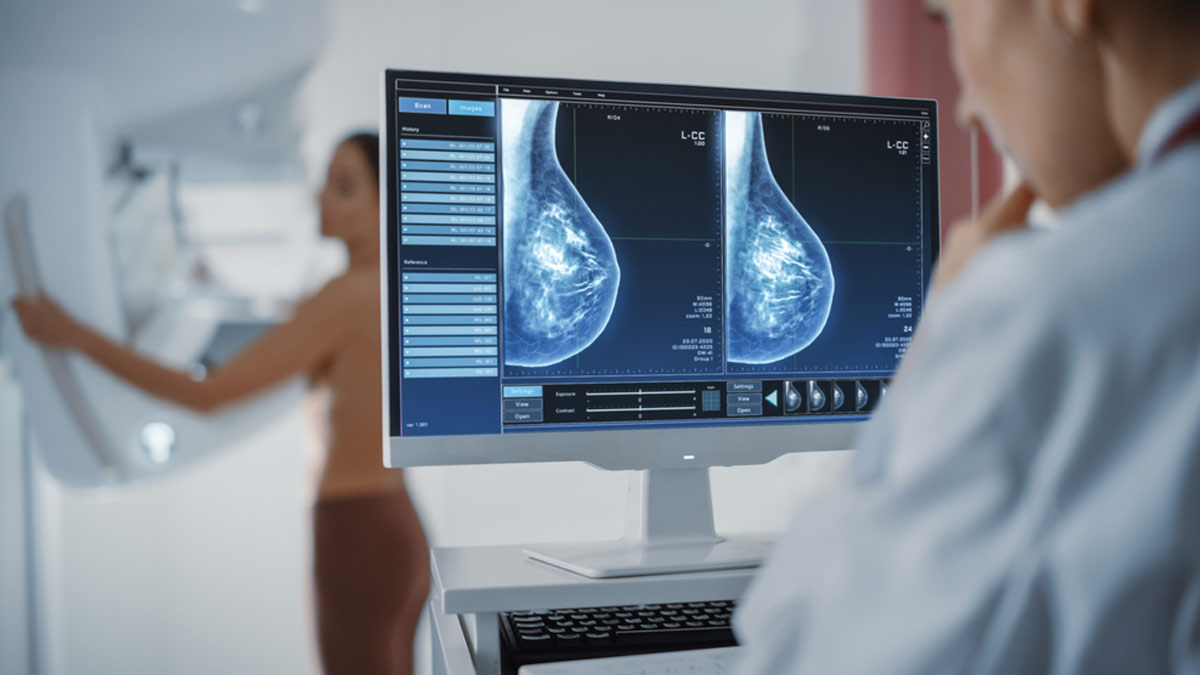
Mammograms are a valuable tool for both detecting and diagnosing breast issues. These X-ray images can reveal cancerous cells and other abnormalities, even before symptoms arise. While mammograms offer significant benefits, many people find the procedure daunting. The first question that pops into a person's mind is: Will it hurt?
Table of Content:-
We asked Dr Madhushree Vijayakumar, Consultant – Obstetrician and Gynaecologist, Motherhood Hospitals, Hebbal, Bengaluru, to answer this very commonly asked question and share what a person can expect while undergoing a mammogram.
Also Read: Mammogram: Here Are 9 Things To Know Before Scheduling It
How Does A Mammogram Work?

Mammograms are conducted with a machine that is used to look into the breast tissues.
"What happens here is that a low-dose X-ray is introduced into the breast tissue, thereby creating an image detailing the tissues. From these images, abnormalities or changes in breast tissue are brought out, thereby suggesting the possible existence of cancer," Dr Vijayakumar tells the OnlyMyHealth team.
She adds, "Clearly, mammograms are very good at detecting tumours that are too small to be felt. They can diagnose breast cancer at an early stage, when the disease is most easily treated. Screening mammograms are indicated for women, especially those above the age of 40, to aid in the early diagnosis of the disease."
However, it is important to note that mammograms aren't 100% accurate in showing if a woman has breast cancer, according to the American Cancer Society (ACS). Sometimes, a false-negative or a false-positive result can also occur due to various reasons. The ACS even suggests that screening mammograms miss about one in eight breast cancers.
Does A Mammogram Hurt?
When it comes to whether or not mammograms hurt, Dr Vijayajumar says, “Discomfort or pain during a mammogram is quite common.” This is because it is a test where the breast gets compressed between two plates that spread the tissue to get a clear image of the part under examination.
The doctor shares that some women may find this compression very uncomfortable or even painful because it creates a squeezing effect.
The entire procedure takes about 20 minutes; the actual compression time is just a few seconds per image.
Most women find any discomfort tolerable, but if you have more than minor pain, you should tell the technician so adjustments can be made, the doctor notes.
Factors That May Affect How You Feel During A Mammogram

Different women may have different experiences during a mammogram. Some may find the discomfort bearable, while others may feel more pain. This can be influenced by various factors, including the sensitivity of the breast, which may fluctuate with hormonal changes due to the menstrual cycle, pregnancy, or menopause.
Dr Vijayakumar says, “When breasts are least likely to be tender, a week after the menstrual period is the best time to have a mammogram to minimise discomfort. It is also influenced by a person's pain threshold, as some women are naturally more sensitive to their breast tissue than others. Anxious or stressed feelings about the procedure may heighten one's perception of pain. The skill and technique of the technician also affect the degree of comfort.”
Also Read: Breast Cancer Awareness Month: Right Time To Get A Mammogram Test Done
How To Manage The Anxiety Before A Mammogram

Many women experience anxiety before undergoing a mammogram, which can be managed.
The key is to be informed and aware of the procedure, as the doctor highlights. She says, “Information about the procedure reduces the fear of unknown factors. Knowing that the pain is usually extremely brief and that it's just a test that may potentially spot cancer early might help a little.”
Other things to consider include:
- Practising deep breathing and other relaxation techniques, or mild exercise like meditation
- Communication with the health provider
- Knowing what to expect and why not to worry
- Ensuring comfort throughout the test
- Bringing someone with you for support
- Making the appointment at a time when you might not be so stressed
- Reminding yourself why this screening is important to your health
Conclusion
Early detection of breast cancer is crucial, and mammograms are a powerful tool to help you do that. Starting at age 40, women are encouraged to get regular mammograms, as older women, even without any risk factors, are at a greater risk of developing the disease. The screening can help identify abnormalities even before they cause symptoms. By including mammograms in your routine health checks, you can take a proactive approach to your well-being.
Also watch this video
How we keep this article up to date:
We work with experts and keep a close eye on the latest in health and wellness. Whenever there is a new research or helpful information, we update our articles with accurate and useful advice.
Current Version